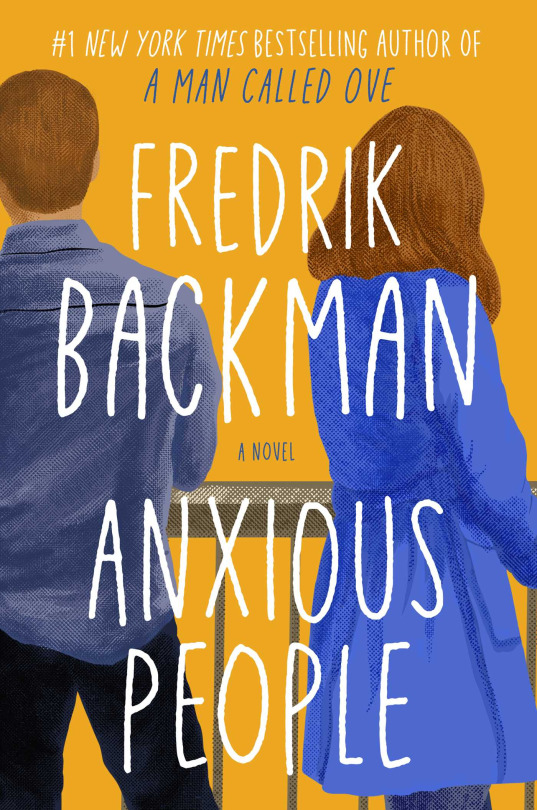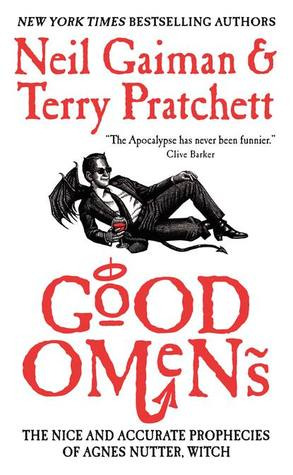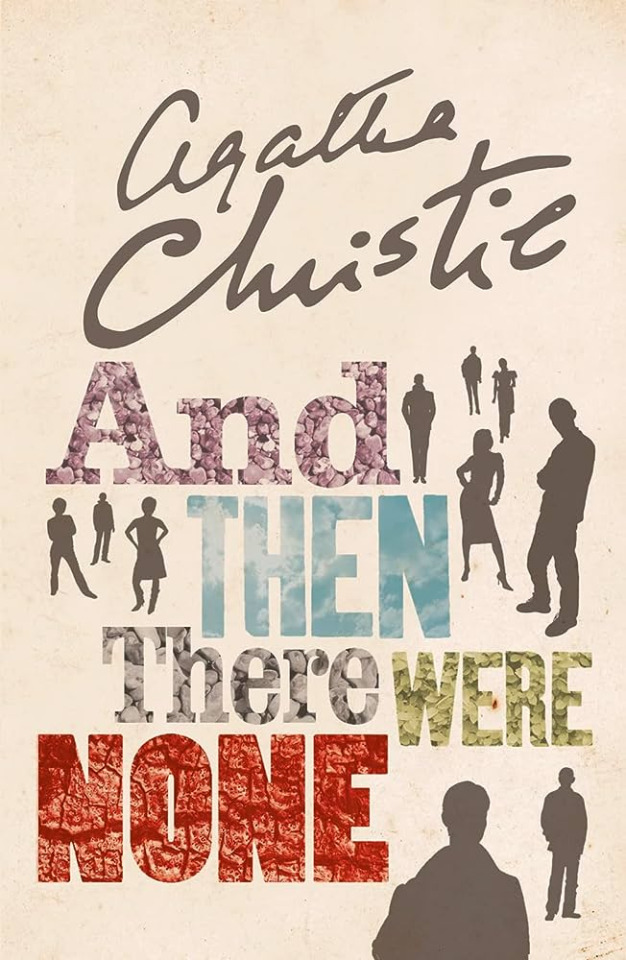#web site represents
Explore tagged Tumblr posts
Text
the racism/colorism of lord of the rings has got me thinking a lot about how it is important to critique the things we love, but it is also important to remember that we can still love them despite their problematic nature- and that everyone that carries on about how anyone that enjoys whatever piece of problematic media are horrible, irredeemable people, always has a piece of media they enjoy that is just as problematic, but because they are convinced that consumption is a moral act (and god forbid you imply they aren’t morally pure), can’t accept it and will make endless excuses as to why it isn’t the same. the only thing that really matters is being able to see what is wrong with the media, engage critically with it, and accept that it is what it is- and that some people will always be uncomfortable with it, and rather than making excuses, you have to own up to the thing you like being kinda shitty
#saw the two towers today and whewww the “men of the east” were sure something#especially juxtaposed with the ~oh so noble~ white characters 😵💫#there was that moment where faramir looks at the dead man and wonders aloud who he was in life- if he was really any different from them#but like. it is So Very Little in the face of the very clearly Arabic influences of the design of the “evil army” and their dehumanization-#-by the narrative#like I get that lotr is a metaphor* for the world wars and they represent the Asian and Middle Eastern aspect of the Axis powers but. oof#(also why are the only dark skinned characters evil creatures like orcs and goblins 😭😭 like come on)#non rebloggsble post bc this is the no nuance allowed webbed site#*= I know Tolkien railed against this analysis but like. Come on man it clearly is very influenced by your experiences#(also in a letter he openly admitted his goblins appearances were based on Asian ppl)
5 notes
·
View notes
Text









I was tagged by @thevowels-pt2 to post my 9 favorite books (thank you, Anna!), so here it is! I think that's a pretty good selection of what I enjoy the most lmao.
As for tagging...gonna be honest, I don't even know who reads here, so: if you're a Discworld fan, I'm tagging YOU. If you read a lot and see this and you're like 'oh, I'd love to do this with my fave books!' then I'm definitely talking to you, and I'm tagging YOU.
#books#tag games#this was very fun i probably ended up leaving out a lot of faves but whatever#i wanted to have the truth too because that's my other discworld fave but couldn't do it sorry#also every dead thing is like...representative of the whole charlie parker series i couldn't possible pick just one. i love you mr connolly#and da vinci code YEAH LET ME HAVE THIS ONE GUYS. MY EMOTIONAL SUPPORT FUN LITTLE MYSTERY BOOK. langdon is MY babygirl let me have it.#for real im tagging whoever sees this and wants to do it#also do you know how HARD it was to do this post on desktop. HELL it kept deleting my pictures what a webbed site.
8 notes
·
View notes
Text
Digital model of Ancient Rome released

Image Credit: FLYOVERZONE
Rome Reborn 4.0, a digital model of Ancient Rome has just been released by archaeologist, Dr Bernard Frischer. Published by Flyover Zone, the model is a reconstruction of the entire city of Ancient Rome for academic study and virtual tourism. Rome Reborn provides a birds-eye perspective of the complete digital model, enabling users to glide above the historic landmarks while listening to expert narrations about 43 monuments, temples, structures, and locations.

Dr Frischer said, “Rome Reborn 4.0 is the culmination of more than twenty-seven years of collaborative international work in using digital tools to research cultural history and bring it to life.” According to the project leaders, the virtual tour can be used by teachers on Yorescape, a mobile and web app that takes their students on virtual field trips, or by armchair travellers to explore the heritage sites of the ancient capital of the Roman Empire.
Rome Reborn 4.0 represents the most recent iteration of an urban model that Dr Frischer has led since 1996. Rome Reborn has been a globally collaborative project from its inception, uniting specialists in Roman archaeology, computer graphics, and Virtual Reality design. The project’s earlier versions include 1.0 (2007), 2.0 (2008), and 3.0 (2018). Video fly-throughs of these previous versions have been viewed by millions of people worldwide. Similar to its earlier versions, Rome Reborn 4.0 portrays the city as it might have appeared at its zenith in the year AD 320, just before the capital’s relocation to Constantinople. According to Flyover Zone, “This reconstruction of ancient Rome’s urban landscape adheres to scientific accuracy based on the available but fragmentary historical evidence. As new findings and interpretations of this evidence emerge, the Flyover Zone team continuously updates Rome Reborn to ensure it remains a dependable and comprehensive visualization of the city.”
BY :Mark Milligan
1K notes
·
View notes
Text
"In China, a landscape architect is reimagining cities across the vast country by working with nature to combat flooding through the ‘sponge city’ concept.
Through his architecture firm Turenscape, Yu has created hundreds of projects in dozens of cities using native plants, dirt, and clever planning to absorb excess rainwater and channel it away from densely populated areas.
Flooding, especially in the two Chinese heartlands of the commercial south and the agricultural north, is becoming increasingly common, but Yu says that concrete and pipe solutions can only go so far. They’re inflexible, expensive, and require constant maintenance. According to a 2021 World Bank report, 641 of China’s 654 largest cities face regular flooding.
“There’s a misconception that if we can build a flood wall higher and higher, or if we build the dams higher and stronger, we can protect a city from flooding,” Yu told CNN in a video call. “(We think) we can control the water… that is a mistake.”

Pictured: The Benjakitti Forest Park in Bangkok
Yu has been called the “Chinese Olmstead” referring to Frederick Law Olmstead, the designer of NYC’s Central Park. He grew up in a little farming village of 500 people in Zhejiang Province, where 36 weirs channel the waters of a creek across terraced rice paddies.
Once a year, carp would migrate upstream and Yu always looked forward to seeing them leap over the weirs.
This synthesis of man and nature is something that Turenscape projects encapsulate. These include The Nanchang Fish Tail Park, in China’s Jiangxi province, Red Ribbon Park in Qinghuandao, Hebei province, the Sanya Mangrove Park in China’s island province of Hainan, and almost a thousand others. In all cases, Yu utilizes native plants that don’t need any care to develop extremely spongey ground that absorbs excess rainfall.

Pictured: The Dong’an Wetland Park, another Turescape project in Sanya.
He often builds sponge projects on top of polluted or abandoned areas, giving his work an aspect of reclamation. The Nanchang Fish Tail Park for example was built across a 124-acre polluted former fish farm and coal ash dump site. Small islands with dawn redwoods and two types of cypress attract local wildlife to the metropolis of 6 million people.
Sanya Mangrove Park was built over an old concrete sea wall, a barren fish farm, and a nearby brownfield site to create a ‘living’ sea wall.
One hectare (2.47 acres) of Turenscape sponge land can naturally clean 800 tons of polluted water to the point that it is safe enough to swim in, and as a result, many of the sponge projects have become extremely popular with locals.
One of the reasons Yu likes these ideas over grand infrastructure projects is that they are flexible and can be deployed as needed to specific areas, creating a web of rain sponges. If a large drainage, dam, seawall, or canal is built in the wrong place, it represents a huge waste of time and money.

Pictured: A walkway leads visitors through the Nanchang Fish Tail Park.
The sponge city projects in Wuhan created by Turenscape and others cost in total around half a billion dollars less than proposed concrete ideas. Now there are over 300 sponge projects in Wuhan, including urban gardens, parks, and green spaces, all of which divert water into artificial lakes and ponds or capture it in soil which is then released more slowly into the sewer system.
Last year, The Cultural Landscape Foundation awarded Yu the $100,000 Oberlander Prize for elevating the role of design in the process of creating nature-based solutions for the public’s enjoyment and benefit."
-via Good News Network, August 15, 2024
#china#wuhan#thailand#bangkok#landscape#wetlands#sponge city#landscape architecture#flooding#climate action#parks#public park#green architecture#sustainability#good news#hope
1K notes
·
View notes
Text
Everyday homeowners are human shields for Wall Street’s Internet of Shit slumlords

The American Dream, such as it is, used to be two dreams, one based on work and solidarity, the other on asset appreciation and disconnected individualism. We killed the first one.
As the New Deal gave way to the post-war social safety net, Americans discovered two paths to social mobility: they could join a union, and they could buy a home. Joining a union meant that your wages would rise with productivity, and that the democratic ideal that you were meant to approach once every two years at the ballot-box could follow you into the building you spent more waking hours in than any other: your jobsite.
Labor unions used their political power to win labor rights, so that even workers who weren't a union couldn't be arbitrarily fired, or maimed on the job with impunity, or harassed or abused. And while the labor movement was mired in the same racist legacy that every American institution brought forward out of genocide and slavery, where racialized people started unions of their own or demanded representation from the unions who nominally represented them, they thrived.
Then there were houses. On the one hand, owning your home insulated you from the petty tyranny of the landlord, the threat of eviction, rent hikes, indifferent or dangerous building maintenance, and all the other miseries that arise when you think of a building as your home and someone else thinks of it as an asset, and the board is tilted so that they win every argument.
But homeownership wasn't just sold as a way to get out from under scumbag landlords: it was primarily sold as a way to build intergenerational wealth. Your house wasn't just a place to live: it was an asset, and it appreciated.
And if the dividends of labor protection were unevenly distributed between white people and racial minorities, the dividends of home ownership were almost entirely hoarded by white families. Federal policies – redlining – combined with racist lending at the local level, meant that Black families and other racialized groups were stuck in tenancy, while white families build wealth thanks to federal subsidies:
https://web.archive.org/web/20170220005558/https://www.demos.org/sites/default/files/publications/Asset%20Value%20of%20Whiteness.pdf
Those were the two American dreams: a good job and your own home. We killed the first one, and the second one devoured us whole.
Without a strong labor movement, wages stagnated. Corporate power waxed, and with it, the power to pollute, to poison, to maim and to defraud. The labor movement wasn't strong enough to stop Reagan from killing free UC tuition when he was governor of California. It wasn't strong enough to hold back spiraling health care prices. It wasn't strong enough to block the business lobby from neutering antitrust and ushering in four decades of market concentration, market capture and corruption. Workers couldn't save their defined benefits pension and were railroaded into market-based 401(k)s, forcing them to play the stock casino against their bosses, ever the sucker at the poker table.
With stagnant wages and out of control medical, educational and end-of-life bills, homeownership – the thing you do as an individual, where your gain is someone else's loss – became the American secular religion. Your house wasn't just a place to sleep and keep your photo albums: if it appreciated enough, you might be able to liquidate it on your deathbed and pay off your eldercare, your healthcare, your kids' college debt, and leave enough left over for your kids' downpayments.
And so every American who had a home became the enemy of every American who didn't – including one another's children. Every home built threatened your own property values. The racist, batshit American school funding formula, which sees schools funded out of property taxes, meaning the richest kids get the best schools, turned out to be a great way to increase your property values.
Protections for tenants, meanwhile, threatened the entire American way of life – the American dream itself. Every protection a tenant got – protection from eviction or rent hikes, the legal right to a safe and well-maintained home – reduced the value of every home in town.
After all, the better a landlord has to treat their tenants, the less money a landlord can make from a rental property. The less money a landlord can make from a rental property, the less they'd bid on a house like yours if it went up for sale.
And since anyone planning to buy your house to live in it has to outbid a landlord who might want to rent it out, giving tenants any protection threatened everything – the one asset you owned, which was your plan a, b and c for paying off all that health, education, and assisted living debt:
https://pluralistic.net/2021/06/06/the-rents-too-damned-high/
Today, the house-as-asset scam is breathing its last. There are millions more people who need homes than there are homes available. Sure, homelessness is a fantastically complex problem, but you could address every aspect of it – addiction, mental illness, joblessness – and millions of people would still be homeless, because there aren't enough homes for them to live in:
https://headgum.com/factually-with-adam-conover/myths-about-homeless-people-with-dr-margot-kushel
70% of all inflation in 2024 came from the cost of housing; a quarter of that came from illegal collusive behavior by landlords to hike rents:
https://www.thebignewsletter.com/p/up-to-a-quarter-of-rental-inflation
Wall Street landlords have raised gigantic war-chests and are buying up homes at a rate never before seen, converting every available single-family home in many cities from an owner-occupied home to a rental. Private equity and hedge fund landlords have elevated charging junk fees to an absurdist theater project: you pay a "convenience" charge for paying your rent in cash. But also for paying your rent by direct transfer. Oh, and also for paying in cash. When Wall Street is your landlord, your home is a slum, dangerously undermaintained, sometimes lethally so:
https://pluralistic.net/2022/02/08/wall-street-landlords/#the-new-slumlords
Capitalists hate capitalism. The best thing to sell is something your customer can't live without, and that no one else has for sale. That's why "the market" loves private prisons so much:
https://pluralistic.net/2024/04/02/captive-customers/#guillotine-watch
The vast sums Wall Street is putting into buying up all of America's available housing stock is a bet that they can establish regional monopolies over having a home, and charge all the market can bear.
That's the plan at Invitation Homes, a company that was just targeted by the FTC for a slate of eye-watering crimes against the tenants in the 80,000 single-family homes they've acquired:
https://www.ftc.gov/news-events/news/press-releases/2024/09/ftc-takes-action-against-invitation-homes-deceiving-renters-charging-junk-fees-withholding-security
Invitation Homes purchases homes as they come on the market, and they're also a leading customer of the "build-to-rent" housing industry, a fast-growing segment of new housing starts.
Writing about the FTC's enforcement action against Invitation Homes, Matt Soller brings in Starwood Capital Group, who manage Invitation Homes properties, and own 14,000 more homes in the sunbelt. Invitation and Starwood hate the anti-monopoly movement, and Barry Sternlicht, Starwood's billionaire CEO, really hates FTC Chair Lina Khan:
https://www.thebignewsletter.com/p/monopoly-round-up-corporate-slumlords
The FTC complaint lays out a suite of just comically sleazy things ways that Invitation abuses its tenants, starting with false advertising. The company lists its houses at relatively low rents, then charges a large fee to apply to live there. When you pass the application process, you're told the rent is actually much higher, and if you walk away from the deal, you forfeit your application fee. That scam's netted Invitation $18m since 2019.
Stoller really hates junk fees, calling them "convenience fees without any convenience, service charges without any service performed." He lays out Invitation's long list of junk fees, which honestly sound like a list that Chatgpt would spit out if you prompted it for fifty junk fees that wouldn't pass the giggle-test: "utility management fees" "Lease Easy bundle fees," "air filter delivery fee," "smart home technology fees," etc etc.
"Smart home technology fee?" Yeah, Invitation's gone in hard for Internet of Shit smart home tech. The SVP who oversees Invitation's smart home fee program was ordered to "juice this hog" (you guys, juice doesn't come from hogs).
After decades of recruiting everyday American homeowners to demand anti-tenant policies that benefit giant corporations, American tenants have few rights on paper and even fewer in practice. That's left the door wide open for Invitation to abuse their tenants in a myriad of dismal and unimaginative ways: stealing their deposits, trashing their credit reports to retaliate against complaints, illegal evictions, busted appliances, mold, vermin, insects – the whole slumlord playbook.
As Stoller writes, there's a twist: "this landlord isn’t just a random slumlord, it’s one of the biggest Wall Street players in housing."
There are vast fortunes to be made in converting the human right to housing into an asset class, but those fortunes end up in the hands of a very small number of billionaires. On their own, they wouldn't have the political power to dismantle protections for tenants.
Realistically speaking, most kids who grew up in their parents' owner-occupied homes are going to end up tenants, thanks to undersupply and housing inflation. But those kids' parents have spent decades demanding policies to make their homes as valuable as possible – including mortgage tax breaks (but not rent tax breaks!), looser eviction laws, and less enforcement of what few protections tenants have.
Middle class homeowners are the useful idiots and human shields of the billionaires who are determined to force every American under 40 raise their kids in a rented slum full of spiders, ratshit and black mold, which will still cost 60% of their take-home salary.
That's why the FTC's action against Invitation Homes is such a big deal. And as Stoller points out, Chair Khan is really just implementing Kamala Harris's campaign promise to get Wall Street out of the landlord business.
Wall Street's raid on your bedroom and kitchen has inspired a generation of "finfluencer" copycats who buy and flip apartment buildings, sucking ever-larger amounts of cash out of them until they're unfit for human habitation, with mountains of rat-infested garbage ringing their crumbling walls:
https://pluralistic.net/2024/05/22/koteswar-jay-gajavelli/#if-you-ever-go-to-houston
Any future worth living in is going to get housing right. We need to stop thinking of housing as an asset and realize that it is, first and foremost, a human right. That's the premise of my 2023 solarpunk novel The Lost Cause, which just came out in paperback:
https://us.macmillan.com/books/9781250865946/thelostcause
You can't protect yourself from rising seas or rising healthcare bills through individual home-ownership. Solidarity – the kind of solidarity that once powered the union movement, and that is powering it again – is the only way to defeat the housing profiteers. The New Deal wasn't perfect, which is why whatever we do next has to be bigger, further reaching, and more inclusive than what FDR did almost a century ago.
The only minority that should be excluded from the next New Deal is billionaires.

Tor Books as just published two new, free LITTLE BROTHER stories: VIGILANT, about creepy surveillance in distance education; and SPILL, about oil pipelines and indigenous landback.


If you'd like an essay-formatted version of this post to read or share, here's a link to it on pluralistic.net, my surveillance-free, ad-free, tracker-free blog:
https://pluralistic.net/2024/10/01/housing-is-a-human-right/#rentier-tech

Image: Sam Valadi (modified) https://www.flickr.com/photos/132084522@N05/17086570218/
Carlos Delgado (modified) https://commons.wikimedia.org/wiki/File:Wall_Street_-_New_York_Stock_Exchange.jpg
CC BY 2.0: https://creativecommons.org/licenses/by/2.0/
841 notes
·
View notes
Text

Obama’s Global Spy Network Targeted Trump: Explosive New Evidence Revealed!
Barack Obama’s shadowy betrayal has surfaced, shaking the very core of America. He orchestrated a treasonous conspiracy, weaponizing global intelligence networks to attack Donald Trump—a man who dared to challenge the globalist cabal.
Project Fulsome: A Web of Treason
Obama, in collaboration with Britain’s GCHQ, bypassed U.S. laws to spy on Trump, his family, and his campaign. Trump Tower wasn’t just wiretapped—it was a surveillance fortress. Tools designed for counter-terrorism were turned against an American citizen. Financial records, emails, and private conversations were infiltrated, with the Deep State feeding this intel to fabricate scandals.
This was no ordinary operation; it was a globalist vendetta to preserve their crumbling grip on power. Secret satellites even tracked Trump’s movements during the 2016 campaign. Every action, every word—monitored.
The Russia Hoax: Manufactured Lies
The infamous Russia hoax wasn’t an accident. Phony dossiers, funded by Clinton’s allies and legitimized by Obama’s corrupted agencies, were part of this operation. The Steele dossier? Pure disinformation. Whistleblowers reveal it was a long-planned strategy to discredit any outsider who challenged their rule. Trump just happened to win, making him target #1.
Black Sites and Secret Courts: Deep State Tools
Beyond spying, Obama’s network used secret courts and black sites to crush Trump’s allies. FISA warrants based on lies enabled illegal surveillance. Black sites deployed rogue operatives to infiltrate Trump’s inner circle, feeding intel back to the cabal.
Why They Had to Stop Trump
Trump’s presidency represented a direct threat to their empire. He promised to end endless wars, dismantle corrupt trade deals, and expose their hidden agendas. The globalist pipeline funding their machine was at risk. Trump wasn’t a puppet—he was their worst nightmare.
The Awakening: Deep State on the Brink
The Deep State is collapsing. Whistleblowers are stepping forward. Leaks are surfacing. Patriots within the intelligence community are exposing the truth. Platforms like X and Telegram bypass Big Tech’s censorship, spreading revelations far and wide.
The Fight Isn’t Over
Obama’s betrayal exposed the elites’ desperation. Now is the time to act. Share the truth. Demand accountability. Stand with Trump. The Deep State is crumbling, but the battle for freedom continues.
You would think ALL that 👆 would be something you'd see in a spy/espionage movie like "Enemy of the State" with Gene Hackman and Will Smith.
Stay vigilant. History will remember those who fought for truth. 🤔
#pay attention#educate yourselves#educate yourself#reeducate yourselves#knowledge is power#reeducate yourself#think about it#think for yourselves#think for yourself#do your homework#do some research#do your own research#do research#ask yourself questions#question everything#news#obama#barack obama#government corruption#lies exposed#evil lives here#spying#treason
479 notes
·
View notes
Note
I think it's silly how the most obscure and inconsistent version of anarchist represents the entire ideology but class reductionists, capitalist roaders, transphobes and police bootlickers on this webbed site don't represent Marxism-Leninism. I think someone who has admitted to still being new at being a communist should perhaps refrain from broad statements about other leftists. We're in this struggle together. Finding obscure weirdos to dunk on is a waste of time.



mfw leftist infighting
245 notes
·
View notes
Text
miku.earth update: September 15
Hi all! This is a lil progress update for those interested. In a rush? Here's the cliff notes!
The map site at miku.earth is back: sorry for the delay in fixing it! Check it out: it has six hundred Mikus!
Including the hyuge ol' queue, we've collected over 3,100 mikus!
Representation is important! I've been using some fancy stats to avoid bias. To that end, please help make sure we have a Miku in every African country!
oh hey! you clicked 'keep reading!' well hi! here is your Miku Direct. . The map site, miku.earth, is back!
I ran into a kinda complex issue and it was a whole Thing. I was working on the site the whole time though! Sorry for the delay, and I hope you enjoy now it's back up and running.
This site has six hundred Mikus on the map, and more are added each week. It was recently rebuilt from scratch (fun fact! I am not a web developer) so I hope it is far zippier and less glitchy as before. A mobile-friendly version is coming soon too!
Also: check out the new search feature! In addition to the title, artist name and region(s), it can also search for the categories indigenous and historic!
cw: this video involves moving around a 2D map with some speed. on the site itself site, this only happens when you hit the Enter key.
We've reached more than 3,100 mikus!
Even at its Miku-per-hour speed, the queue will continue until 2025 at least! This is with thanks to an incredible number of contributions, including donations of literal thousands of links.
Thank you so much to @awnowimsad, @worldmikuposter @the-hatsune-miku-trend, @communist-hatsunemiku, @council-of-beetroot, L-A and a whole host of DMers and emailers for helping get this far.
Oh and by the way: over two thirds of the collection are tumblr posts! Given that this was originally a twitter trend… if you know any Twitter users who are into this trend, please reach out. Some napkin math tells me there are at least 10,000 works of art total out there, which is, by the way, surreal. Let's make sure not a single one is lost.
If you're super curious, the collection is public! I have some tools to auto-annotate (I do not want RSI), but be aware the backlog isn't vetted.
Representation is important!
Fun as this trend is, this project was always intended as a serious study into how people represent their own culture through artwork. I'm no anthropologist, but I feel it is important to make sure this collection is respectful and bias-free. If we're to represent the world, we have to avoid underrepresentation!
To that end I've used some fancy statistics to calculate a "representation value" for each country. Here's a table if you're into the stats of it! This info is handy to help me with the queue – especially with tweets as they're a lil more effort than a carefully-tagged reblog. Of course, Indigenous, hyperspecific and low-note Mikus get priority.
And, well, of course you can see on the site there are purple regions for countries still missing a Miku. In particular, please help me make sure every country in Africa is represented.
Thank you for reading!
Phew! That was a lot. If you're still curious, please check the behind-the-scenes and source code. I work in the open! Even if my code is probably messy.
And if you're a programmer, issues and pull requests are welcome! This is actually a static site, so it's purdy easy to develop.
350 notes
·
View notes
Text






CANOSA DI PUGLIA: What a wonderful couple of days I spent last week in Canosa [despite the rather warm weather]. I visited the excavations and the new venue of the Museo Archeologico Nazionale di Canosa [not yet open to the public], engaged in discussions with local archaeologists and art historians from the Fondazione Archeologica Canosina [ https://www.canusium.it ], and gathered excellent material for my forthcoming article in ANTIQVVS Magazine. The article will focus on one of the distinctive aspects of the pre-Roman heritage of Canosa.
I would like to express my sincere gratitude for the warm hospitality and the superb organisation of the visit, which included access to unique and often overlooked historical sites as well as ongoing excavations. My thanks go both to the Fondazione Archeologica Canosina as an institution, and to its individual founders, representatives and specialists:
Dott. Sergio Fontana, President [ IG: @ fac_canusium ]
Matteo Fraccacreta [ IG: @ fac_canusium ]
Francesco Specchio [ IG: @ canosasiamonoi ]
Giusy Del Vento [ IG: @ giusydelvento ]
Giovanni De Ventuno, Univ. of Bari
Archaeological Museum of Canosa https://museipuglia.cultura.gov.it/musei/museo-nazionale-archeologico-di-canosa IG: @ museo_archeologico_canosa
Fondazione Archeologica Canosina:
Web : https://www.canusium.it
FB : https://www.facebook.com/canusium.it
IG : @ fac_canusium
YT : @ fondazionearcheologicacano7127
THANK YOU ALL and See you next time! 🙏
#canosa#canosa di puglia#canusium#apulia#puglia#daunia#magna grecia#pre-Roman#ancient#history#archaeology#archeologia#heritage#classical#antiquity#mythology#art history#archaeological#museum#ancient culture#ancient cultures#antiquities#museology#culture#photojournalism#antiqvvs#article#archaeology photography#museum photography#michaelsvetbird
66 notes
·
View notes
Text
Terminology Thursday: Webring

How did fans find fansites and archives in the early days of the web? One way is this week’s Terminology Thursday, the webring!
A webring is a circular collection of websites that could be explored via navigation bars that were present on each site. Fan webrings covered a plethora of fandom interests, from the more general, like fanfiction, to the specific, focused on one fandom or even one ship. If you visit the webrings category on Fanlore you can see the variety of fandoms and topics represented. Webrings were very popular in the 1990s, and were still in use in the early 2000s, but they gradually tapered off as fandom drifted away from individual fansites.
Are you curious? Head over to Fanlore to learn more.
-----
We value every contribution to our shared fandom history. If you’re new to editing Fanlore or wikis in general, visit our New Visitor Portal to get started or ask us questions here!
#fanlore#Terminology Thursday#Thurminology#webrings#fandom terminology#90s fandom#00s fandom#old web#old internet#text by Kingstoken#graphic by FaalThien
94 notes
·
View notes
Text


[ID: A greenish-brown soup with an herb garnish in a bowl surrounded by a halved lemon, green cardamom pods, and bay leaves, followed by a close-up of the same soup. End ID]
شوربة الفريكة / Shorabat al-frika (Green wheat soup)
Frika (فَرِيكَة or فَرِيك; also transliterated "freekeh," "frikeh," or "farik") is durum wheat harvested in the early spring, while the grain is green, unripe, and tender. Durum wheat, or semolina, is a different species of wheat than that which is ground to produce all-purpose flour (common wheat, or bread wheat); it is used to make couscous (كُسْكُس), bulghur (بلغور), and many types of pasta, and is widely consumed in North Africa, the Levant, and the Arabian peninsula. After harvest, unripe durum is sun-dried and then set ablaze in piles to burn off the straw and leave just the heads of wheat, resulting in a nutty, smoky flavor; the heads are then vigorously rubbed, traditionally by hand, to remove the bran. Frika is named after this last process; the word comes from the verb "فَرَكَ" "faraka," "to rub."
A staple in Palestine, shorabat al-frika (with diacritics, Levantine pronunciation: شُورَبَة الفْرِيكَة) is often eaten as an appetizer with the fast-breaking meal during Ramadan. It may contain nothing more than an onion, olive oil, frika, and water, but sometimes contains meat (usually chicken, but also beef or lamb), green chili peppers, and spices including cardamom, black pepper, bay leaves, turmeric, cumin, and seb'a baharat; some people today like to add chickpeas. Shorabat al-frika is often prepared with the chicken broth obtained by boiling chicken to make musakhkhan (مُسَخَّن), and served alongside it. It is a warming, filling, and earthy soup, with a complexity of flavor imparted by the frika itself: a fresh tartness due to the unripe grain, and a roasted aroma due to its harvesting process.
Shorabat al-frika is in keeping with a Palestinian food ethos of using simple, local ingredients to their fullest potential. Frika itself is sometimes thought to symbolize adaptability and resilience, as it was often eaten in times of scarcity when other crops were not yet ready to be harvested. Legend holds that it was discovered in a time of similar necessity: when villagers in the eastern Mediterannean tried to salvage a field of wheat that had been burned by ambushing soldiers, they found that the grain was still edible beneath the blackened chaff, having been saved from the fire by its moisture.
Frika, due to its centuries as a staple in Palestine, has also come to symbolize acceptance, Palestinian history, and connection to the land and community. In the Palestinian diaspora and amongst internally displaced people in Palestine, food is conceived of as a form of connection to homeland across distance; continuing to make Palestinian food, and remembering or using baladi ("native," "from my country") varieties of grains, produce, and herbs, is a link to the land and an expression of the hope to return.
By the same token, though, frika has come to represent Palestinian displacement and "cultural obliteration," per Rana Abdulla. One of the ways in which Israel rhetorically justifies its existence is by claiming sole ownership of an old, organically arising culture rooted in the land: the easiest way to do this is, of course, to rebrand what was already there. Food connects and combines language (in terminology and pronunciation), culture, history, climate, and land into one web of discourses, and is therefore a prime site for colonial myth-making and ideological nation-building. Thus a construction such as "Israeli freekeh" is, in fact, an intensely political one.
Nevertheless, frika continues its life as a symbol of connection, community, and resistance during adversity in Palestine. Nasser Abufarha, of the Palestine Fair Trade Association, noted in 2015 that more and more Palestinians across the West Bank were harvesting some of their wheat early to make frika, rather than relying on cheaper, imported rice. As of October 23 2023, and in defiance of an Israeli air raid which destroyed their kitchen in 2014, Jamil Abu Assi and his cousins were using frika, alongside lentils and rice, as staples in distributing food to thousands of refugees per day in Bani Suhaila, near Khan Younis. Others in the community donated ingredients or volunteered to distribute meals.
Support Palestinian resistance by contributing to Palestine Action's bail fund or to Palestine Legal's defence fund, or by attending court or making a sign to support the Elbit Eight.
Ingredients:
1 cup (170g) frika baladia (فريكة بلدية), Levantine frika
4 cups water, or vegetarian chicken stock from concentrate
1 large yellow onion, chopped
1/4 cup extra virgin olive oil
1 green chili pepper (فلفل أخضر حار), sliced (optional)
1/2 tsp ground black pepper (فلفل اسود)
5 cardamom pods (حب هال)
2 Mediterannean bay leaves (ورق غار)
250g chicken (or beef) substitute, torn or cubed (optional)
Salt, to taste
Parsley, to garnish
Halved lemon, to serve (optional)
I have kept the spices relatively simple, as most cooks do, to highlight the earthy end of the taste spectrum and to allow the flavor of the frika itself to come forward. Most people add at least cardamom and black pepper; many add bay leaves to this duo; turmeric is the next most common addition I have come across. I have seen a few people add cumin, coriander, or allspice.
Frika can be found in the grains section of your local halal grocery store (labelled "فريكة", “فريك" "freekeh" or "frikeh"). Look for something that specifies “roasted.”

You may also be able to find frika at a speciality or health foods grocery store, but it might not have been fire-roasted as it is in the Levant. If your frika doesn't smell toasty, try roasting it in a dry pan on medium-heat for a few minutes until fragrant.
Frika may be found whole, cracked, or fine (نَاعِمَة / na'ima). You may use any kind for this soup; most people use cracked or fine frika, because of its shorter cooking time. You can pulse whole frika a few times in a food processor or spice mill, until coarsely ground, if you prefer a fine texture but can't find fine frika.

Instructions:
1. Heat olive oil in a large pot on medium. Add onion, a pinch of salt, cardamom pods, and bay leaves and fry, stirring occasionally, until the onion is golden brown.
2. Add the chili pepper and cook briefly until softened.
3. Add frika and black pepper and roast, stirring occasionally, for a few minutes until fragrant.
4. Add the water or stock and stir to combine. Bring to a fast simmer and cook, covered, about 50 minutes for whole frika and 20 minutes for ground, until fully cooked. Add additional water as necessary. The frika will still be chewy at the end of the cooking time.
5. Fry meat substitute of your choice in olive oil with salt, black pepper, and a optionally a pinch of Palestinian seven-spice, until browned. Add to soup and stir to combine. Taste the soup and add salt and more black pepper, if necessary.
6. Garnish with whole or chopped parsley and serve warm.
The meat is usually added to this soup just after the onions, and simmered along with the frika. You can do it this way if you like, but I have never found simmering to do the texture of meat substitutes any favors.

497 notes
·
View notes
Text
This week, a 2,500-page leak, first reported by Search Engine Optimization (SEO) veteran Rand Fishkin, gave the world an insight into the 26-year-old mystery of Google Search. “I think the biggest takeaway is that what Google’s public representatives say and what Google search engine does are two different things,” Fishkin said in an emailed statement to Gizmodo.
[...]
King notes that one ranking feature “homepagePagerankNs” suggests the notoriety of a website’s homepage could prop up everything it publishes. Fishkin writes the leak references a system called NavBoost—first referenced by Google’s VP of Search, Pandu Nayak, in his Department of Justice testimony—which purportedly measures clicks to boost rankings on Google Search. Many in the SEO industry are taking these documents as confirmation of what the industry has long suspected: A website deemed popular by Google may receive a higher Search ranking for a query even though a lesser-known site may have better information.
[...]
In a video from 2016, a Google Search representative declared, “We don’t have a website authority score.” In an interview from 2015, another Googler said, “Using clicks directly in ranking would be a mistake.” It’s hard to make sense of these comments now in light of the leaked documents and Google’s response. “This response is a perfect example of why people don’t like or trust Google,” Fishkin said. “It’s a non-statement that doesn’t address the leak, provides no value, and might well have been written by an AI trained on the past decade’s most soulless corporate messaging.” In the era of AI answers, Ruby notes that the way Google ranks web pages is more important than ever. Instead of a series of links to various perspectives, you might just get one straight answer thanks to Google’s new AI Overviews. However, we’ve seen 10-year-old Reddit posts get strange amounts of authority, telling some users to put glue in their pizza. How Google chooses authority is increasingly important, since the top result may be the only one with a voice now.
30 May 2024
185 notes
·
View notes
Text




"Splendid You rise in the lightland of the sky, O living Aten, creator of life ! You have dawned in the eastern lightland. You fill every land with your beauty." -Great Hymn to the Aten, 1-4.
Aten/Aton Talon Abraxas
Ancient Egyptian Aten: Sun God And Creator Deity Symbols: sun disk, heat and light of the sun Cult Center: Akhetaten (Tel El-Amarna) Aten was a being who represented the god or spirit of the sun, and the actual solar disk. He was depicted as a disk with rays reaching to the earth. At the end of the rays were human hands which often extended the ankh to the pharaoh. Aten's origins are unclear and he may have been a provincial Sun-god worshipped in one of the small villages near Heliopolis. Aten was called the creator of man and the nurturing spirit of the world. In the Book of the Dead, Aten is called on by the deceased, "Hail, Aten, thou lord of beams of light, when thou shinest, all faces live." It is impossible to discuss Aten without mentioned his biggest promoter, the pharaoh Amenhotep IV, or Akhenaten. Early in his reign, Akhenaten worshipped both Amon (the chief god in Thebes at the time) and Aten. The first as part of his public duties, the latter in private. When he restored and enlarged the temple of Aten first built by his father Amenhotep III, relations between him and priests of Amon became strained. The priests were a major power in Egypt and if another god became supreme they would lose their own prestige. Eventually, relations became so strained that Akhenaten decided to built his own capital by the Nile, which he called, "Akhetaten", the Horizon of the Aten. At Akhetaten, Akhenaten formed a new state religion, focusing on the worship of the Aten. It stated that Aten was the supreme god and their were no others, save for Akhenaten himself. It has been said that Akhenaten formed the first monotheistic religion around Aten. However, this is not the case. Akhenaten himself was considered to be a creator god and like Aten was born again every day. Aten was only accessible to the people through Akhenaten because Akhenaten was both man and part of the cosmos. Akhenaten systematically began a campaign to erase all traces of the old gods, especially Amon. He erased the name of Amon from the temples and public works. He even went so far as to erase his own father's cartouche because the word "Amon" was featured in it. Even the word "gods" was unacceptable because it implied there were other deities besides Aten. It is clear that the Egyptian people never accepted their king's religion and view of the world. Even at his own capital, Akhetaten, amulets featuring Bes and Tauret have been found. Following Akhenaten's death, Atenism died rapidly. Mostly because the people never really believed in it and also because Akhenaten's successors did all they could to erase Akhenaten and Aten from the public eye. Eventually, Akhetaten became abandoned and the name "Akhenaten" conjured the dim memory of a "heretic king."
105 notes
·
View notes
Text
Even if you think AI search could be good, it won’t be good

TONIGHT (May 15), I'm in NORTH HOLLYWOOD for a screening of STEPHANIE KELTON'S FINDING THE MONEY; FRIDAY (May 17), I'm at the INTERNET ARCHIVE in SAN FRANCISCO to keynote the 10th anniversary of the AUTHORS ALLIANCE.

The big news in search this week is that Google is continuing its transition to "AI search" – instead of typing in search terms and getting links to websites, you'll ask Google a question and an AI will compose an answer based on things it finds on the web:
https://blog.google/products/search/generative-ai-google-search-may-2024/
Google bills this as "let Google do the googling for you." Rather than searching the web yourself, you'll delegate this task to Google. Hidden in this pitch is a tacit admission that Google is no longer a convenient or reliable way to retrieve information, drowning as it is in AI-generated spam, poorly labeled ads, and SEO garbage:
https://pluralistic.net/2024/05/03/keyword-swarming/#site-reputation-abuse
Googling used to be easy: type in a query, get back a screen of highly relevant results. Today, clicking the top links will take you to sites that paid for placement at the top of the screen (rather than the sites that best match your query). Clicking further down will get you scams, AI slop, or bulk-produced SEO nonsense.
AI-powered search promises to fix this, not by making Google search results better, but by having a bot sort through the search results and discard the nonsense that Google will continue to serve up, and summarize the high quality results.
Now, there are plenty of obvious objections to this plan. For starters, why wouldn't Google just make its search results better? Rather than building a LLM for the sole purpose of sorting through the garbage Google is either paid or tricked into serving up, why not just stop serving up garbage? We know that's possible, because other search engines serve really good results by paying for access to Google's back-end and then filtering the results:
https://pluralistic.net/2024/04/04/teach-me-how-to-shruggie/#kagi
Another obvious objection: why would anyone write the web if the only purpose for doing so is to feed a bot that will summarize what you've written without sending anyone to your webpage? Whether you're a commercial publisher hoping to make money from advertising or subscriptions, or – like me – an open access publisher hoping to change people's minds, why would you invite Google to summarize your work without ever showing it to internet users? Nevermind how unfair that is, think about how implausible it is: if this is the way Google will work in the future, why wouldn't every publisher just block Google's crawler?
A third obvious objection: AI is bad. Not morally bad (though maybe morally bad, too!), but technically bad. It "hallucinates" nonsense answers, including dangerous nonsense. It's a supremely confident liar that can get you killed:
https://www.theguardian.com/technology/2023/sep/01/mushroom-pickers-urged-to-avoid-foraging-books-on-amazon-that-appear-to-be-written-by-ai
The promises of AI are grossly oversold, including the promises Google makes, like its claim that its AI had discovered millions of useful new materials. In reality, the number of useful new materials Deepmind had discovered was zero:
https://pluralistic.net/2024/04/23/maximal-plausibility/#reverse-centaurs
This is true of all of AI's most impressive demos. Often, "AI" turns out to be low-waged human workers in a distant call-center pretending to be robots:
https://pluralistic.net/2024/01/31/neural-interface-beta-tester/#tailfins
Sometimes, the AI robot dancing on stage turns out to literally be just a person in a robot suit pretending to be a robot:
https://pluralistic.net/2024/01/29/pay-no-attention/#to-the-little-man-behind-the-curtain
The AI video demos that represent "an existential threat to Hollywood filmmaking" turn out to be so cumbersome as to be practically useless (and vastly inferior to existing production techniques):
https://www.wheresyoured.at/expectations-versus-reality/
But let's take Google at its word. Let's stipulate that:
a) It can't fix search, only add a slop-filtering AI layer on top of it; and
b) The rest of the world will continue to let Google index its pages even if they derive no benefit from doing so; and
c) Google will shortly fix its AI, and all the lies about AI capabilities will be revealed to be premature truths that are finally realized.
AI search is still a bad idea. Because beyond all the obvious reasons that AI search is a terrible idea, there's a subtle – and incurable – defect in this plan: AI search – even excellent AI search – makes it far too easy for Google to cheat us, and Google can't stop cheating us.
Remember: enshittification isn't the result of worse people running tech companies today than in the years when tech services were good and useful. Rather, enshittification is rooted in the collapse of constraints that used to prevent those same people from making their services worse in service to increasing their profit margins:
https://pluralistic.net/2024/03/26/glitchbread/#electronic-shelf-tags
These companies always had the capacity to siphon value away from business customers (like publishers) and end-users (like searchers). That comes with the territory: digital businesses can alter their "business logic" from instant to instant, and for each user, allowing them to change payouts, prices and ranking. I call this "twiddling": turning the knobs on the system's back-end to make sure the house always wins:
https://pluralistic.net/2023/02/19/twiddler/
What changed wasn't the character of the leaders of these businesses, nor their capacity to cheat us. What changed was the consequences for cheating. When the tech companies merged to monopoly, they ceased to fear losing your business to a competitor.
Google's 90% search market share was attained by bribing everyone who operates a service or platform where you might encounter a search box to connect that box to Google. Spending tens of billions of dollars every year to make sure no one ever encounters a non-Google search is a cheaper way to retain your business than making sure Google is the very best search engine:
https://pluralistic.net/2024/02/21/im-feeling-unlucky/#not-up-to-the-task
Competition was once a threat to Google; for years, its mantra was "competition is a click away." Today, competition is all but nonexistent.
Then the surveillance business consolidated into a small number of firms. Two companies dominate the commercial surveillance industry: Google and Meta, and they collude to rig the market:
https://en.wikipedia.org/wiki/Jedi_Blue
That consolidation inevitably leads to regulatory capture: shorn of competitive pressure, the companies that dominate the sector can converge on a single message to policymakers and use their monopoly profits to turn that message into policy:
https://pluralistic.net/2022/06/05/regulatory-capture/
This is why Google doesn't have to worry about privacy laws. They've successfully prevented the passage of a US federal consumer privacy law. The last time the US passed a federal consumer privacy law was in 1988. It's a law that bans video store clerks from telling the newspapers which VHS cassettes you rented:
https://en.wikipedia.org/wiki/Video_Privacy_Protection_Act
In Europe, Google's vast profits lets it fly an Irish flag of convenience, thus taking advantage of Ireland's tolerance for tax evasion and violations of European privacy law:
https://pluralistic.net/2023/05/15/finnegans-snooze/#dirty-old-town
Google doesn't fear competition, it doesn't fear regulation, and it also doesn't fear rival technologies. Google and its fellow Big Tech cartel members have expanded IP law to allow it to prevent third parties from reverse-engineer, hacking, or scraping its services. Google doesn't have to worry about ad-blocking, tracker blocking, or scrapers that filter out Google's lucrative, low-quality results:
https://locusmag.com/2020/09/cory-doctorow-ip/
Google doesn't fear competition, it doesn't fear regulation, it doesn't fear rival technology and it doesn't fear its workers. Google's workforce once enjoyed enormous sway over the company's direction, thanks to their scarcity and market power. But Google has outgrown its dependence on its workers, and lays them off in vast numbers, even as it increases its profits and pisses away tens of billions on stock buybacks:
https://pluralistic.net/2023/11/25/moral-injury/#enshittification
Google is fearless. It doesn't fear losing your business, or being punished by regulators, or being mired in guerrilla warfare with rival engineers. It certainly doesn't fear its workers.
Making search worse is good for Google. Reducing search quality increases the number of queries, and thus ads, that each user must make to find their answers:
https://pluralistic.net/2024/04/24/naming-names/#prabhakar-raghavan
If Google can make things worse for searchers without losing their business, it can make more money for itself. Without the discipline of markets, regulators, tech or workers, it has no impediment to transferring value from searchers and publishers to itself.
Which brings me back to AI search. When Google substitutes its own summaries for links to pages, it creates innumerable opportunities to charge publishers for preferential placement in those summaries.
This is true of any algorithmic feed: while such feeds are important – even vital – for making sense of huge amounts of information, they can also be used to play a high-speed shell-game that makes suckers out of the rest of us:
https://pluralistic.net/2024/05/11/for-you/#the-algorithm-tm
When you trust someone to summarize the truth for you, you become terribly vulnerable to their self-serving lies. In an ideal world, these intermediaries would be "fiduciaries," with a solemn (and legally binding) duty to put your interests ahead of their own:
https://pluralistic.net/2024/05/07/treacherous-computing/#rewilding-the-internet
But Google is clear that its first duty is to its shareholders: not to publishers, not to searchers, not to "partners" or employees.
AI search makes cheating so easy, and Google cheats so much. Indeed, the defects in AI give Google a readymade excuse for any apparent self-dealing: "we didn't tell you a lie because someone paid us to (for example, to recommend a product, or a hotel room, or a political point of view). Sure, they did pay us, but that was just an AI 'hallucination.'"
The existence of well-known AI hallucinations creates a zone of plausible deniability for even more enshittification of Google search. As Madeleine Clare Elish writes, AI serves as a "moral crumple zone":
https://estsjournal.org/index.php/ests/article/view/260
That's why, even if you're willing to believe that Google could make a great AI-based search, we can nevertheless be certain that they won't.

If you'd like an essay-formatted version of this post to read or share, here's a link to it on pluralistic.net, my surveillance-free, ad-free, tracker-free blog:
https://pluralistic.net/2024/05/15/they-trust-me-dumb-fucks/#ai-search

Image: Cryteria (modified) https://commons.wikimedia.org/wiki/File:HAL9000.svg
CC BY 3.0 https://creativecommons.org/licenses/by/3.0/deed.en
--
djhughman https://commons.wikimedia.org/wiki/File:Modular_synthesizer_-_%22Control_Voltage%22_electronic_music_shop_in_Portland_OR_-_School_Photos_PCC_%282015-05-23_12.43.01_by_djhughman%29.jpg
CC BY 2.0 https://creativecommons.org/licenses/by/2.0/deed.en
#pluralistic#twiddling#ai#ai search#enshittification#discipline#google#search#monopolies#moral crumple zones#plausible deniability#algorithmic feeds
1K notes
·
View notes
Text

He told his wife, "I love you," then left for work that morning. He never returned. It was September 11, 2001.
He was a husband. He was a veteran. He was an immigrant. And, he was a hero.
According to the Homeland Security web site, Rick Rescorla is credited with saving 2,700 lives that morning, when he defied official instructions to stay in the building and instead evacuated employees at his company on the 44th floor of the South Tower.
Another hero was Betty Ong, who was one of the flight attendants aboard American Airlines Flight 11, who gave vital information to the ground crew that eventually led to the closing of airspace by the FAA for the first time in United States history.
Flight 93 passengers Todd Beamer, Mark Bingham, Tom Burnett and Jeremy Glick fought their hijackers, preventing the plane from reaching its intended target, possibly the White House or the U.S. Capitol Building.
There were also 412 First Responders who died in the line of duty - 343 firefighters (including a chaplain and two paramedics) of the New York City Fire Department, 37 police officers of the Port Authority of New York and New Jersey Police Department, 23 police officers of the New York City Police Department, and 8 emergency medical technicians and paramedics from private emergency medical services and 1 patrolman from the New York Fire Patrol.
There were also smaller acts of bravery, such as Michael Benfante and John Cerqueira carrying a woman in a wheelchair down 68 floors of the north tower of the World Trade Center to safety and Frank De Martini and Pablo Ortiz of the Port Authority who saved at least 50 lives in the North Tower.
They and many others were the heroes of 9/11.
In all, there were 2,977 people who lost their lives on Sept. 11, 2001. The victims were mothers, fathers, sons, daughters, sisters and brothers who belonged to many faiths, races, and cultures, from more than 90 countries.
Of the Americans - they were white, they were black, they were brown, they were red, they represented all the different colors that built this nation. They were LGBTQ, they were straight, they were men, they were women, they were liberal, they were conservative, they were young, they were old . . . they were ALL Americans.
No one questioned whether they stood for the national anthem or put their hand over their heart, no one demanded they show their citizenship papers, no one questioned their love for their country.
I remember 9/11. I remember the names of the victims being read. I remember the heroes who bled. I remember the families who cried. I also remember that for one day, the entire world cried with us, marched in candlelight vigils in support of "America," whether it was in England or Iran -- for one moment the world was one.
I post this each year not just to remember the victims, the heroes, all the people who were directly touched in some way that day, but I also want to post this for those who are still suffering today, the families who had no choice but to continue without their loved ones, the veterans of the wars who were not supported upon their return and represent a majority of the suicides in this nation (on this World Suicide Prevention Day), the first responders who sacrificed their lives and their health and are still suffering today and their brothers and sisters fighting fires this very moment, and, most importantly, all the people of the world still hoping for, still seeking, still dreaming of a world without HATE, a world without fear, a world without greed.
A world instead focused with Love, a world with Hope, a world with . . .
Peace ~
The Jon S. Randal Peace Page
72 notes
·
View notes
Text
A man named Vance Boelter allegedly shot and killed Melissa Hortman, a Democratic Minnesota state representative, and her husband Mark Hortman at their home at some point early Saturday morning while, according to law enforcement, impersonating a police officer. He also allegedly shot state senator John Hoffman and his wife Yvette Hoffman at their home. They are alive, but remain in critical condition.
Law enforcement has said they found a manifesto and hit list in the alleged suspect’s car, which included politicians, abortion providers, and pro-abortion rights advocates. There were also allegedly fliers in his car for the “No Kings” protest against President Donald Trump, which took place in cities across the US on Saturday.
The 57-year-old, who has been identified as the suspected shooter by law enforcement, runs an armed security service with his wife, and has been affiliated with at least one evangelical organization, a ministry he has also run with his wife, according to a tax filing reviewed by WIRED. (His wife could not be immediately reached for comment.) According to public records and archived websites reviewed by WIRED, the suspect served for a time as the president of Revoformation Ministries. A version of the ministry’s website captured in 2011 carries a biography in which he is said to have been ordained in 1993.
According to an archived website for the ministry reviewed by WIRED, the suspected shooter’s missionary work took him to Gaza and the West Bank during the Second Intifada, where, the website states, he “sought out militant Islamists in order to share the gospel and tell them that violence wasn't the answer.”
A later version of the site was designed, according to an archived copy, by Israeli web design firm J-Town. Charlie Kalech, CEO of J-Town, tells WIRED that the alleged suspect was, in his recollection, “clearly religious and evangelistic. He had lots of ideas to make the world a better place.” The suspect, whom Kalech said was “nothing but nice to me,” commissioned J-Town, Kalech recalled, because they’re Jerusalem-based, and he said he wanted to support Israel.
Over the previous several years, according to LinkedIn posts, he was also the CEO of Red Lion Group, which according to an archived copy of its website had aspirations in the oil refining, logging, and glass production sectors in the Democratic Republic of the Congo.
In a 2023 sermon reviewed by WIRED and delivered by the alleged shooter in Matadi, a city in the Democratic Republic of Congo that is on the border with Angola, he preached against abortion and called for different Christian churches to become “one.”
“They don't know abortion is wrong, many churches,” he said. “They don't have the gifts flowing. God gives the body gifts. To keep balance. Because when the body starts moving in the wrong direction, when they're one, and accepting the gifts, God will raise an apostle or prophet to correct their course.”
”God is going to raise up apostles and prophets in America,” he added, “to correct His church.”
In another sermon in Matadi that year, Boelter railed against the LGBTQ community. “There's people, especially in America, they don't know what sex they are. They don't know their sexual orientation. They're confused,” he said. “The enemy has gotten so far into their mind and their soul.”
A Facebook profile under the suspected shooter’s name was briefly viewed by WIRED before it was taken down. His profile had shown him “liking” several evangelical missionary organizations, as well as pages honoring Reinhard Bonnke, a German pentecostal evangelist known for missions in several African countries, and Smith Wigglesworth, a British evangelist who was influential in the pentecostal movement. He also “liked” the Alliance Defending Freedom, a conservative legal advocacy organization known for its hardline stances against abortion and LGBTQ rights.
“I’m in shock,” Nathalie Nkashama, one of the alleged shooter’s friends, tells WIRED. “My body’s shaking … I’m worried about him. This cannot be the person I know. I’m wondering what happened.”
“It’s more of like, holiness all the time in conversations,” she added, describing her interactions with him. “I wish we could talk to him. I’m worried about his wife, his family. They’re all nice people, very nice.”
The suspected shooter also appears to be the director of security patrols at Praetorian Guard Security Services, a security company run servicing the Minneapolis and St. Paul metro areas that he founded with his wife Jenny. The company, which also lists Todd Boelter, a former police officer and the alleged shooter’s cousin, as a security training manager advertises residential security patrols and uniformed security patrols. “We only offer armed security. If you are looking for unarmed guards, please work with another service to meet your needs better,” states the “red lines” section of the company’s website. The website also states that their “guards” wear the “best personal protective equipment money can buy.”
Officials say that the suspect in the shootings had an SUV kitted out with emergency lights, a badge, and a taser. Though it is not yet clear where the suspect obtained materials to allegedly impersonate a police officer, the Praetorian Guard Security Services website states that their guards “drive the same make and model of vehicles that many police departments use in the US. Currently we drive Ford Explorer Utility Vehicles.” According to photographs from the scene, the car towed away by law enforcement was a Ford.
The suspected shooter, according to his LinkedIn profile, is a veteran of the food industry, having worked for Johnsonville Sausage, Del Monte, and the Irish convenience food manufacturer Greencore; recently, he posted that he was looking to return to that sector. (The companies for which his profile says he worked did not immediately reply to requests for comment.)
His involvement in the food industry has also seemingly helped him build inroads to local government. In 2019, Minnesota governor Tim Walz appointed him to a Workforce Development Board in the capacity of a “business and industry representative.” He also served as chair on the Dakota-Scott Workforce Development Board for over a decade, but resigned last year, according to a post on LinkedIn.
Police officers in the Minneapolis suburb of Champlin say they were called at around 2 am to the residence of state senator Hoffman.
At 3:35 am, police officers in nearby Brooklyn Park went to proactively check on Hortman’s home. Police chief Mark Bruley said at a press conference that officers discovered an SUV appearing to resemble a squad police car with emergency lights parked in Hortman’s driveway. Officers then encountered the alleged suspect, who they said was dressed like a police officer, wearing a police vest and a badge, and was armed with a taser. He immediately fired on them and then retreated back into Hortman’s home. Officials believe he fled out the back of the residence. “No question if they were in this room you would assume they are a police officer,” Bruley said.
Hours later, the shooting suspect is still believed to be at large.
Hortman was first elected to Minnesota’s house of representatives in 2004. She served as speaker of the house from 2019 to 2025, finishing her term this year after the state house successfully passed legislation on abortion rights, voting rights, criminal justice reform, marijuana legalization, and more.
“Our state lost a great leader and I lost the dearest of friends,” Walz said in a press conference on Saturday. “Speaker Hortman was someone who served the people of Minnesota with grace, compassion, humor, and a sense of service. She was a formidable public servant, a fixture, and a giant in Minnesota. She woke up every day determined to make this state a better place. She is irreplaceable and will be missed by so many.”
29 notes
·
View notes